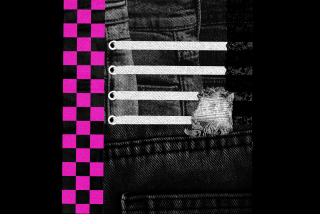NORTHRIDGE : Anti-Gang Activists Note Warning Signs
- Share via
First comes defiance, then nicknames, then black sneakers--all steps on a road that lead to tattoos and Uzis, anti-gang activists told Northridge neighbors Monday.
At a workshop aimed at helping parents recognize signs of gang involvement in children, Lin Squires, whose son was killed by a gang member in 1990, and Ellen Wagner, co-member of Squires’ group, Mad About Rising Crime, described the progression from an angry youth to a gang member and criminal to an audience of about 90 at United Methodist Church.
With the help of charts mounted on an overhead projector, Squires outlined in clinical terms what she said were the three stages of gang involvement:
In the earliest stage, a youth may emulate gang clothing and engage in tagging, she said. Within five or six months, the youth may exhibit symptoms of stage two--spray-painting X’s over a rival’s graffiti and brawling. By stage three, the youth may drop out of school, get arrested and display a “dedication to the gang that is more important than life itself,” Squires said.
Most the crowd appeared middle-aged or older, but about half a dozen teen-agers attended the workshop.
“I think some of the judgments they did on the clothes--saying you can tell a gang member--you know, everyone wears that stuff,” said Aaron DuBois, a 14-year-old freshman at Granada Hills High School.
Lin Squires and her husband Clark formed Mad About Rising Crime after their son Marc was shot at a party. The nonprofit group conducts graffiti cleanups and occasional workshops to deter crime.
More to Read
Sign up for Essential California
The most important California stories and recommendations in your inbox every morning.
You may occasionally receive promotional content from the Los Angeles Times.










